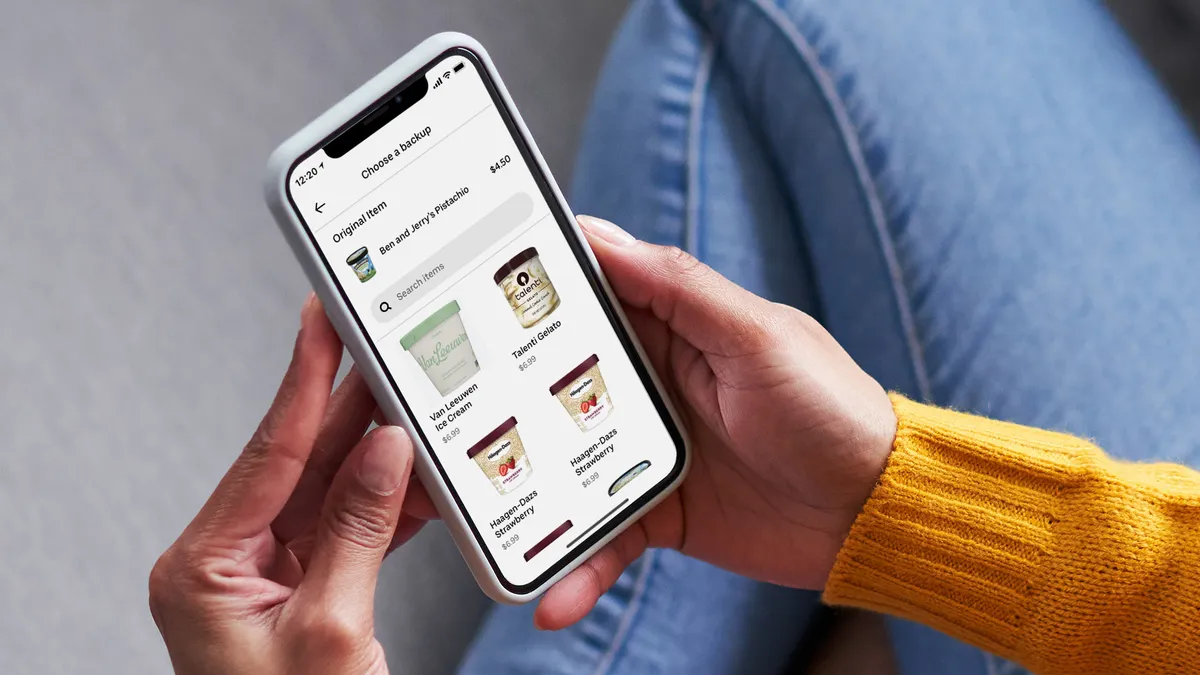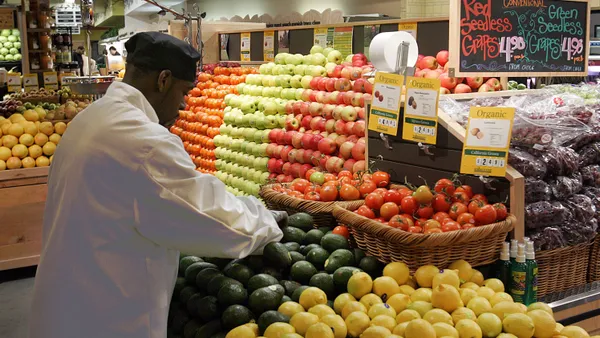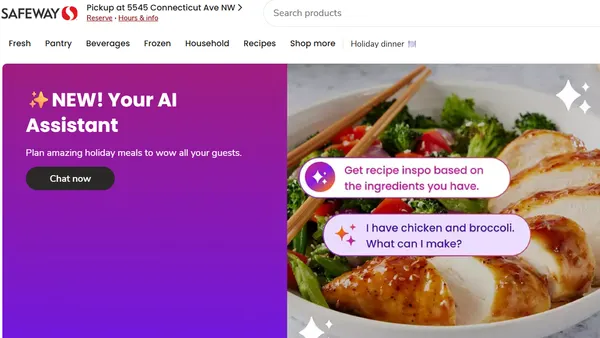Dive Brief:
- Uber announced on Thursday it is launching a new “grocery experience” on its Eats app with several new features for customers, retailers and workers that will roll out throughout the summer, starting with unidentified “select cities” next week.
- The features include the ability to schedule orders regardless of whether a store is open or not, improved barcode scanning and more efficient inventory management.
- Oskar Hjertonsson, Uber’s global head of grocery and retail and former CEO and co-founder of Cornershop, said during a press conference that the new features are the “most comprehensive update yet” for Uber’s grocery vertical. The changes come as Uber is “betting in a huge way on grocery,” Hjertonsson said.
Dive Insight:
Uber has been slow to ramp up its grocery delivery services since launching U.S. grocery delivery on Eats in July 2020. But the latest updates indicate the company doesn’t intend to sit back and watch Instacart and DoorDash dominate third-party service.
Last summer, Uber announced it had acquired the remainder of grocery delivery firm Cornershop in an all-stock transaction after saying in October 2019 it would take a majority stake in the Chile-based firm. Hjertonsson helped co-found Cornershop in 2015. Currently, Cornershop and Uber’s combined grocery business is at a $4.5 billion run rate, Hjertonsson said, noting the new features are looking to create “fresh new product experiences” that set up Uber to scale its grocery offerings.
During the press conference, Therese Lim, Uber’s senior director of new verticals and grocery product, outlined the changes coming to the Eats app, noting that they aim to make grocery e-commerce on par with in-store shopping and as easy as restaurant ordering on Uber Eats.
The new order scheduling feature allows customers to place orders regardless of whether a store is open, either for the next available delivery window or during another open time slot. Lim noted this feature stemmed from customer feedback and aims to resolve constraints around when stores are open or have couriers available to shop.
Another new feature is live order tracking, which will allow customers to follow and interact with the person shopping the orders.
“For frequent Eats users, this is going to feel like a natural extension of the order tracking you already know and love, but it's going to be supercharged because it's going to be much more granular,” Lim said.
The new barcode scanning tool will allow workers to use their phones to scan items they are picking. Customers will then be able to see each product the worker has selected in the app.
Additionally, Uber is rolling out features it says address some of the common frustrations consumers experience with order substitutions. Customers can now “proactively provide” their personal shopper with alternatives if the item they originally ordered is not available.
“What we've heard from [customers] is that this specificity is incredibly important to them,” Lim said.
Customers will be able to select several other preferences for replacements and rely on the worker to select the replacement item, or they can elect to get a refund for any out-of-stock items instead of substitutions, Lim said.
Uber is also going to start allowing shoppers to buy more items priced by weight, like steaks and produce, in response to consumer and retailer demand for the same selections available with in-person shopping.
In a bid to get a broader selection of grocers' assortment on the Uber Eats platform, Uber is making it easier for grocers to upload as many SKUs digitally as they want. Grocers will have real-time inventory management and improved product catalogs, stemming from Uber’s work with retailers who have “tens of thousands” of items.
When Uber launched grocery delivery in 2020, it said it would rely on workers with Cornershop to pick orders inside stores and perform deliveries, with Uber drivers eventually able to take on grocery delivery shifts. On Thursday, Lim said Uber will begin allowing Uber workers to pick orders in store and also deliver them, positioning the move as an added job opportunity. Lim said the company is also introducing 24/7 support and training for workers and retailers to learn more about the new shopping opportunities.
As Uber sets out to become a bigger presence in grocery e-commerce, the announcement leaves a number of open questions about the company’s future in grocery.
In response to a question about if Uber is considering offering pickup for grocers, Lim said it’s an option Uber is exploring: “We're actively looking at all types of opportunities ... for future potential launches. We recognize the compelling need there.”
It's also unclear how this new “grocery experience” impacts ordering for grocery delivery on Uber’s main rides app. Lim said the changes announced on Thursday just apply to the Eats app but noted: “We strive to make sure that all of our features are accessible no matter which Uber app you’re using.”
Uber has inked partnerships with several grocery chains since launching into the channel, most notably Albertsons. Hjertonsson declined to cite specifics on how many grocery partners Uber has and in how many cities it offers grocery delivery.










